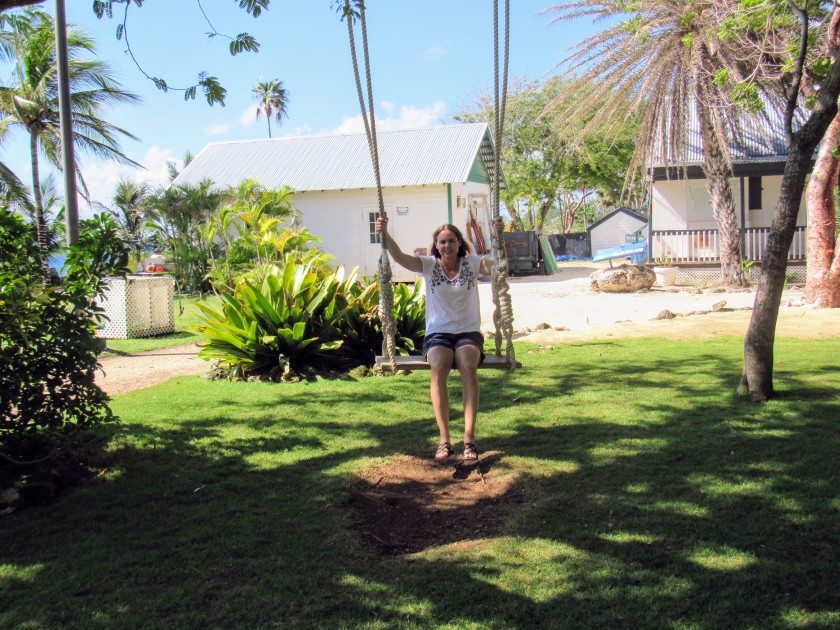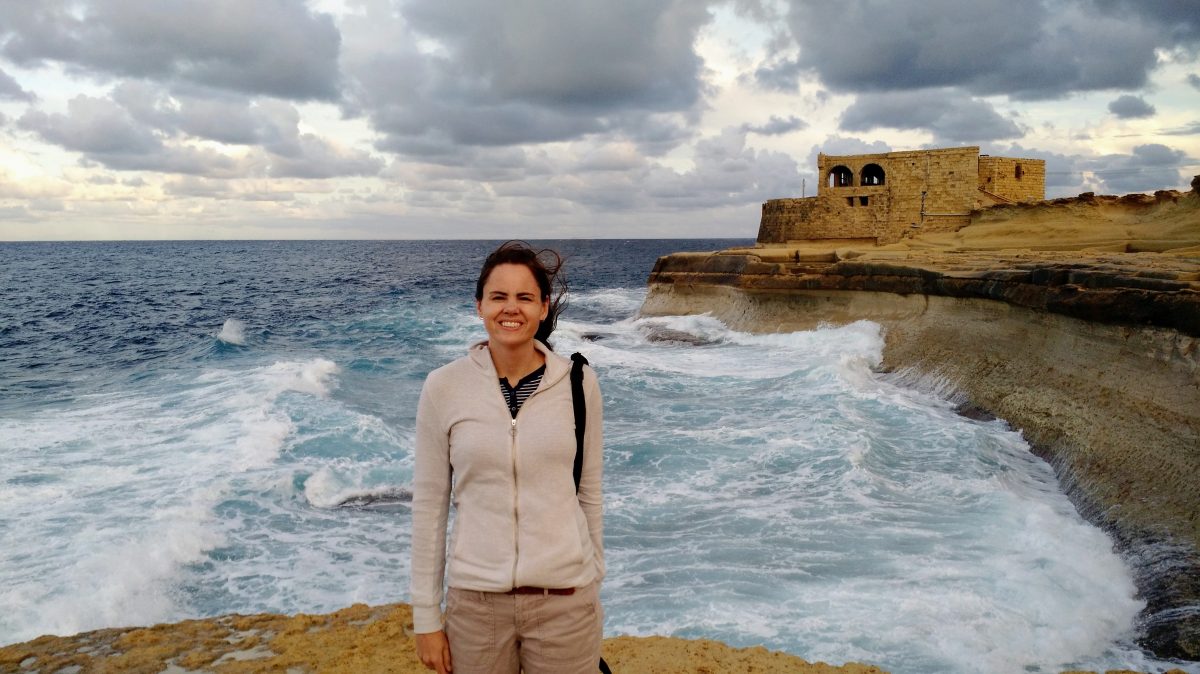Previously, I wrote about the beaches and water-related parts of Grand Cayman Island, (Grand Cayman Island- Beautiful Beaches, Bioluminescent Water, Stingrays, and More) but the beaches and water aren’t the only beautiful and fun places to spend your time. If you enjoy exploring caves, you’ll love Cayman Crystal Caves. This 1.5 hour group tour through Cayman’s oldest landmark is one of the island’s newest natural tourist attractions. There are three caves, the roots cave, the lake cave, and the open-ceiling cave.
My favorite cave is the lake cave, which as you may guess from the name has a small lake in it. The color of the water is such a pretty shade of blue, and it is so peaceful in the cave. I can see why people used to come here on their own before the tour company took over and restricted entry. However, the stalactite and stalagmite crystal structures are extremely fragile, and without supervision, many formations were being broken.

A cool bonus was we saw fruit bats in some portions of the caves. They were tiny little bats just hanging out (literally) in clusters, and one bat would occasionally fly from one side of the cave to another. We also saw tiny litte green tree frogs that the guide pointed out on the leaves of a couple of trees.
Tours are offered seven days a week at every hour starting at 9 am until 4 pm, except Good Friday and Christmas. Tickets are $40 for adults and $30 for children 12 and under. Be sure you wear appropriate footwear (i.e. not flip-flops).

We always love going to botanical gardens when we’re traveling and were happy to discover there is one in Grand Cayman Island. Queen Elizabeth II Botanic Park is on the east side of the island, not far from the Crystal Caves. There are three garden areas, each very different from one another. The Heritage Garden has a restored Caymanian House showing how life was like in the Cayman Islands at the turn of the century. The Xerophytic Garden has plants like cacti and succulents that require minimal water to grow. My favorite is the Floral Colour Garden, with a series of gardens arranged by color and a gazebo and seating area overlooking a lily pond and waterfall.
There is also the Lake and Wetland area on the edge of a Buttonwood Swamp. We saw some birds in the water here and I was very excited to look over at a nearby tree and see several Green Cayman Parrots. As excited as I was to see the parrots, the blue iguanas were the real reason I wanted to come to the gardens.

Blue Cayman Iguanas are highly endangered animals and you can see them on the Blue Iguana Safari, which is a behind the scenes tour of the breeding and recovery program. Our guide, Alberto, was entertaining and enthusiastic about the blue iguanas. He fed some of the iguanas from a plant growing throughout the gardens and held a couple of the more tame ones, although he did show us quite a few of his scars from bites and scratches. We saw a couple of blue iguanas in the park on our own but it wasn’t nearly the experience as from the tour so I’m glad we took the tour.
Very close to the Botanic Park is the Mastic Trail, a two mile trail (although really 4 miles since it’s out and back) that you can arrange a guided tour through for $24 or just do on your own for free (we hiked it on our own). The trail is well-marked and easy to follow. There are some areas where the footing is a bit tricky, but being in Grand Cayman Island where everything is pancake flat, Mastic Trail is the highest point of the island at 60 feet. It’s an easy out and back hike and the only trail on the island as far as I can tell. The trail is well-shaded and quiet. We didn’t see many birds but it was the afternoon; I expect you would see more birds in the morning when they’re usually more active.

I have to briefly mention a unique little part of Grand Cayman Island, known quite simply as Hell. Hell is an area in West Bay the size of half a football field made up of limestone formations. Stories abound about how the area got its name but some think “A ministration exclaimed, ‘This is what Hell must look like.'” Sure, it’s touristy but it’s still fun to go and get your photo taken in Hell.
There are actually two stops here, side-by-side, one that looks like it has a post office and the other has a small tourist shop in the front. I noticed tour buses stopping at the place that looks like a post office in the front and people in rental cars stopping at the other place beside it. We chose the one where tour buses were not visiting and were greeted by an older man who cheerfully brought us out some props for photos and led us inside where his wife or companion gave us a tour of the place and took some photos of us. The woman told us about the limestone formations and pointed out some birds and other things while she gave us a commentary and history about the area. Afterwards, I looked it up and found there are a few other places called Hell, namely one in California, Michigan, and Norway, in addition to Grand Cayman Island. Still, it’s not every day when you can say you went to Hell.

Finally, we visited Pedro St. James National Historic Site, a three-story house built by William Eden, an Englishman, in 1780. This was a mansion in comparison to the other houses on the island at the time, which was just a tiny fishing village. Perhaps best known as the “Birthplace of Democracy in the Cayman Islands”, Pedro St. James was the venue for a meeting on December 5, 1831 where the decision was made to form the first elected parliament.
You can tour the house and grounds on your own for C.I. $10 (Cayman Island dollars) and there is a 20 minute movie inside Pedro Theater to give you some information about the house. Outside, there is a gazebo and gardens and a building with some historical photos and information and other items like historical stamps. When we were there, they were setting up for an event at the gazebo. No doubt there are many special events like weddings held here because of the beautiful setting, with the ocean as the backdrop. It was a nice way to end out time in Grand Cayman Island and we made our way to the airport to go back home after our tour of Pedro St. James.

Queen Elizabeth II Botanic Park
Pedro St. James National Historic Site
Have you been to Grand Cayman Island and if so what did you think of it? Want to go now if you’ve never been? Have you been to Hell?
Happy travels!
Donna

Wow that looks like an amazing trip!
LikeLiked by 1 person
Thanks, it really exceeded my expectations!
LikeLiked by 1 person
never been to that Hell 🙂 And never been to the Cayman Islands, though now I want to! Especially to see that lake cave and the iguanas!
LikeLiked by 1 person
I live not too far from Hell, MI (which, by the way, is frozen over today). Worth visiting once, I suppose. There’s a saloon (of course), and a Halloween shop. But there are some terrific trails in that area and I run them several times a year.
One quick story: Run Woodstock, which has its base at Hell Creek Ranch, holds a “natural run” option at night. One year a few nature-lovers got lost and wound up in all their glory in…downtown Hell. Don’t say you weren’t warned about such activities.
LikeLiked by 2 people
I love that they ended up in Hell! That must have made for one great running story!
LikeLike
Natural running just doesn’t sound like a good idea to me. I like my boxer briefs when running, and I’m sure there is a good reason women wear sports bras!
LikeLike
These look like such fun activities! Will add them to my list for when I make it down there. 🙂
LikeLiked by 1 person
We had so much fun! The island is just packed with great things to see and do. I hope you enjoy it when you go!
LikeLiked by 1 person
Oh, I love caves!
LikeLiked by 1 person
Me too! These were the first caves I’ve seen in the Caribbean. I guess I normally associate caves with more mountainous regions.
LikeLike
The limestone formations in Hell are hellish looking. Thanks for sharing!
LikeLiked by 1 person
You’re welcome!
LikeLike
Lovely post…it’s the first time that I have seen so many bats together.
LikeLiked by 1 person
Thank you! I was intrigued by all of the bats. The ironic part of that is even though bats eat mosquitoes, my family and I got so many mosquito bites when we were touring the area where the caves are. I can’t imagine how much worse it would be without the bats.
LikeLiked by 1 person
Actually it looked scary…I get you ….cant imagine the number of mosquitos.
LikeLiked by 1 person